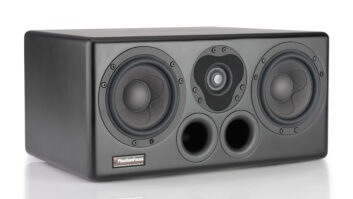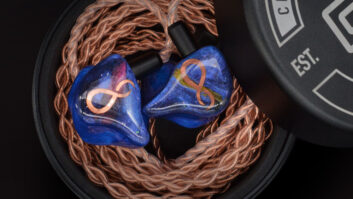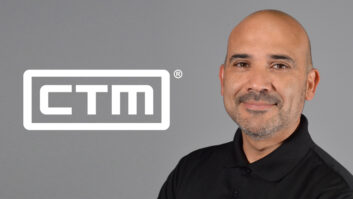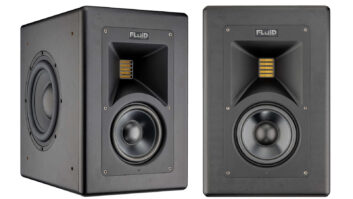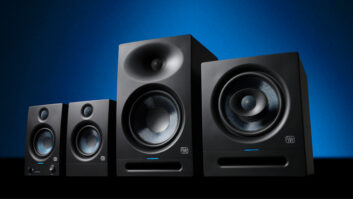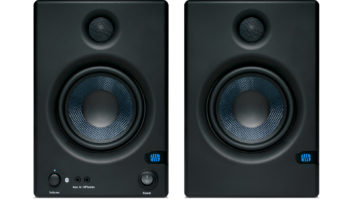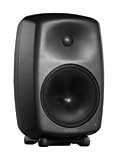

“Genelec Messes With Success!” was the headline I envisioned when I heard that the Finnish company was attempting a major redo of its ubiquitous studio loudspeakers. After all, audio pros are a picky bunch, and once they like something, it can be hard to change their minds (e.g., Yamaha NS-10s). But after hearing these new “curvy” monitors, I think the headline could read: “Wheel Successfully Reinvented.”
Recently introduced at AES Berlin in May 2004 and just hitting the U.S., the new 8000 Series speakers (8030A, 8040A and 8050A) are upgrades of the 1029A, 1030A and 1031A, respectively — speakers of days gone by. The pair tested here are the 8050As, the largest of the group.
THE BASICS
The 8050As have something old and new to offer. The enclosure, drivers, amps and crossovers are new. The cast-aluminum enclosure is rock-solid. Some cabinet lessons learned in the design of the 7000 sub series are employed in the new models and pay off in spades. Many pieces and internal parts have 1mm critical distances. The drivers are a redesign, with the 8-inch bass driver porting in a wide opening at the back of the enclosure. The high-frequency driver is a 1-inch metal dome — type.
The active crossover (frequency set at 1.8 kHz) comprises dual-parallel bandpass filters and offers the familiar treble tilt, bass tilt and bass roll-off dip switch controls. What’s also new is the desktop low-frequency control that compensates for the bass boost encountered when mounting a speaker on a meter bridge or other surface. The amplifiers are mounted on the back of the speaker and offer completely variable input-sensitivity control.
Input is provided on an XLR connector and — along with the tone controls, sensitivity adjustment and on/off button — is neatly tucked into the back of each 28-pound unit. The speakers can be mounted on a console or stand using the included Iso-Pod system. This comprises a hard-rubber isolation mount that is adjustable front to back so the speakers can be aimed at the listener. The mounts are attached to the speaker via two screws on the back and can be shifted for horizontal or vertical mounting.
The speakers also carry integral mounting holes for ceiling or wall mounting. Mounts are available as accessories from Genelec, as are a soft carrying bag and a black floor stand.
LASTING IMPRESSIONS
I tested the speakers on a console top in a medium-to-large — sized control room. The 8050As exceeded my expectations on a number of mix playback listening tests and tracking sessions. First, I noticed the unbelievable imaging. The center is truly nailed with no smear. Any mix items panned anywhere across the stereo pair were precisely placed. Music in varying styles sounded great. The midrange was detailed and full. In short, these speakers rock with the best of them.
Another nice thing is the smooth top end. Cymbals and other transient high-frequency material speak incredibly well on the 8050As. The bottom end is even and well-matched with the rest of the spectrum, although for this particular room, it wasn’t quite big enough. (I kept everything flat.)
In my test room, there was a full six feet between the back of the speaker and the front wall, which also had a large window, angled downward, indented beyond that. In another environment, having the speakers closer to a wall would change the listener’s experience in reference to the low end.
The speakers usually residing in this room are a pair of Genelec 1032As, which provide a nice big bottom end. The 8050s had a hard time keeping up with their big brothers and rightly so. This, according to Genelec, could be because the 1032’s driver is more directional in the upper bass due to its size relative to the frequency it is producing. Depending on room and setup, the 8050s may need help from a sub.
THE VERDICT?
The 8050As are a well-executed upgrade of an industry standard. The only disappointment I experienced was when using the Iso-Pod speaker stands. Genelec recommends vertical mounting for optimal results, but there is no way to accurately aim the speaker along the vertical axis, and with the cabinet having no square edges, you can’t even eyeball it. At this asking price, Genelec could have come up with a better way to accurately position its new flagship product.
That said, these speakers truly step out beyond their predecessors without overdoing it. Looking and listening back to the 1031As, the improvements are things that needed to be addressed. Imaging on the new speakers is stunning and dead-on. High-frequency replication has a ribbon tweeter — like smoothness (I hesitate to make that comparison but that’s how it sounded to my ears), and for a mid-to-small — sized room, there is plenty of robust and even low end.
The 8050As still sound like Genelecs. One comment I heard from a colleague summed it up: “When I went to EQ tracks I’ve previously mixed on 1031As, I blindly grabbed for the same frequencies,” he said. This is important for anyone leery of stepping up to these new monitors. If you liked the Genelec 1031As, then you’ll love the new 8050As. List: $4,100 a pair.
Genelec, 508/652-0900, www.genelecusa.com.
Kevin Becka is
Mix’s
technical editor.

Click here for technical specs, data sheets, setup guide and operating manual for the Genelec 8050A.
To find out more about the Genelec 8030s, click here.
For info on the 8040s, click here.

